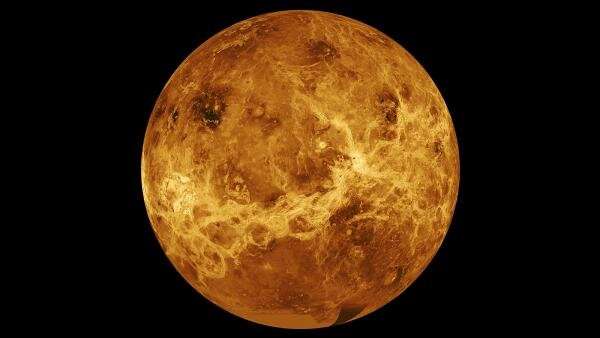That lab is unique in the world in that it can acquire spectra of rocks and minerals at Venus conditions. The new data lay the groundwork for the next planned Venus missions in order to finally be able to determine the different rocks there.
Dyar is lead author on two recent papers published prior to today's Science Advances paper: "Surface weathering on Venus: Constraints from kinetic, spectroscopic, and geochemical data" in Icarus on which PSI Senior Scientist Elizabeth C. Sklute is a co-author, and "Probing Venus Surface Iron Contents With Six‐Band Visible Near‐Infrared Spectroscopy From Orbit" that appears in Geophysical Research Letters.
"We know very little about the geology of the Venus surface. What little we know comes from Soviet landers in the 1970s and from radar data from the Magellan mission, which ended in 1996. Until recently, there were no orbital spectroscopic data for Venus—as are common on other planets—because Venus is covered by thick, CO2 clouds. Visible and near-infrared (VNIR) light cannot penetrate those clouds except in some very small windows in the NIR around a wavelength of 1 micron," Dyar said.
"But now we have acquired spectra in our 'Venus chamber'. We can sample those data to match the windows in the CO2 atmosphere that an orbiter might have," Dyar said. "There are five windows, into which we can fit six spectral bands—the one that was used by Venus Express plus five more. A six-window spectrometer that we designed is being proposed as part of two missions: the US-led VERITAS mission and the ESA mission called EnVision.
"The new lab data allow us to develop machine learning algorithms that can measure the iron contents of surface rocks from orbit with high accuracy. This is important because key igneous rocks types have distinctive iron contents, so we'll be able to distinguish basalt, andesite, dacite, and rhyolites on the surface. Knowledge of rock types informs our understanding of how the Venus surface evolved," she said.
"Our Science Advances paper essentially 'validates' the new lab data by showing that they match spectra taken on the surface by the Soviet landers in the 1970s. They also allow us to measure the iron contents of the basalts at two of those soviet landing sites, providing modern chemical data for previously unknown rocks" Dyar said.
"The Geophysical Research Letters paper more explicitly shows how we can determine FeO contents of Venus surface rocks using just the information in those six spectral bands. This means that if those missions get selected, we will be able to make a geologic map of the Venus surface from orbit using the FeO contents of the rocks," Dyar said. "And the Icarus paper looks at the issue of recent volcanism on the Venus surface and suggests that contrary to prior work conducted under non-Venus conditions, the surface of Venus alters surprisingly slowly in its caustic atmosphere. This means that the surface won't be covered in a single mineral, as prior work has suggested. Our paper gives estimates for how fast the surface will alter, and in turn constrains the age of the Venus surface."
Explore further
"Probing Venus Surface Iron Contents With Six‐Band Visible Near‐Infrared Spectroscopy From Orbit," Geophysical Research Letters (2020). DOI: 10.1029/2020GL090497



